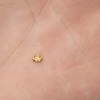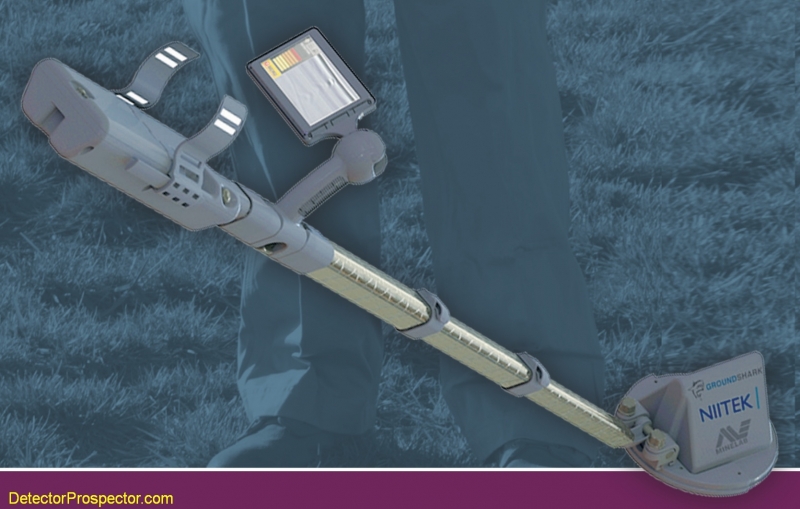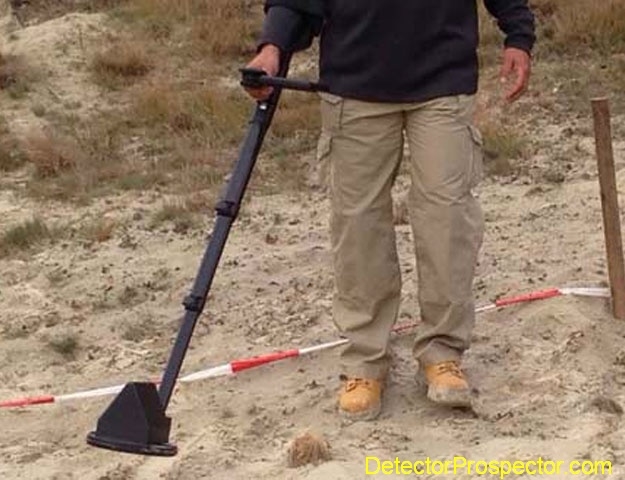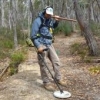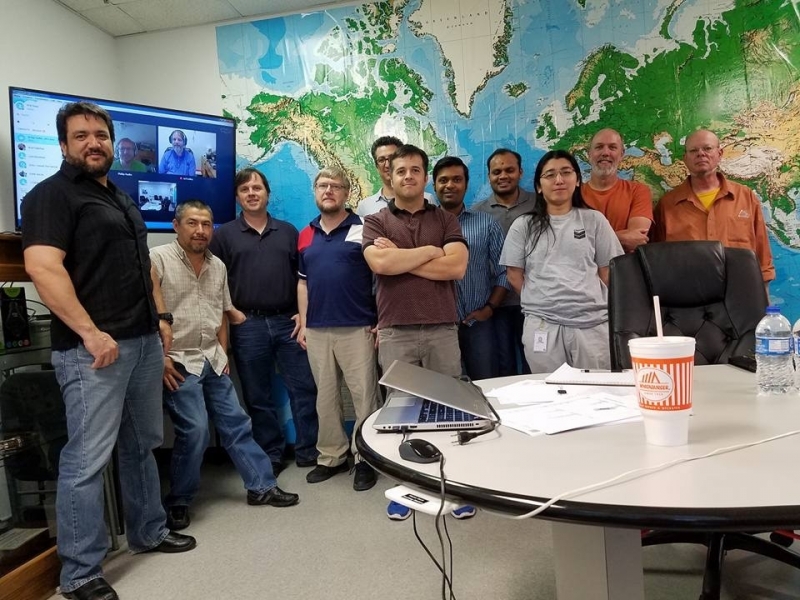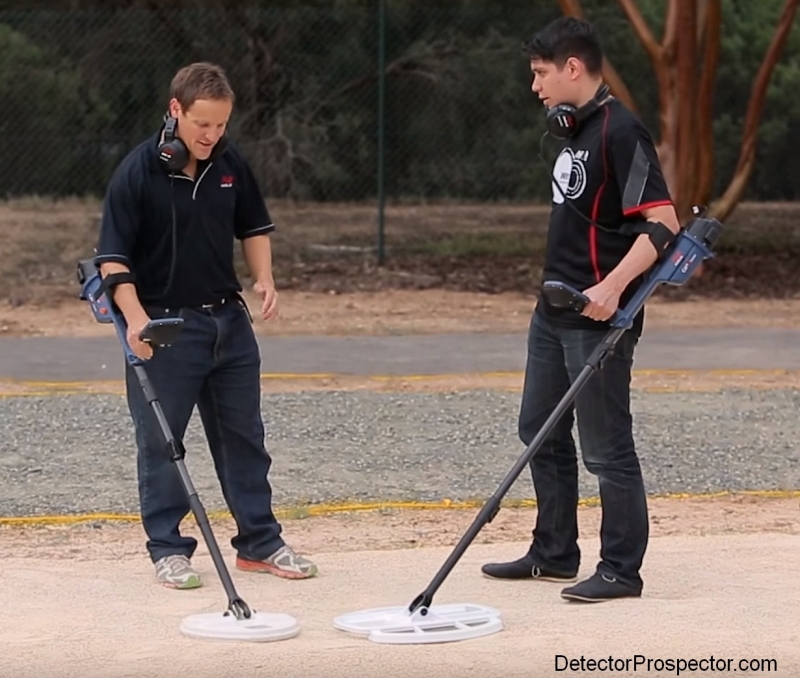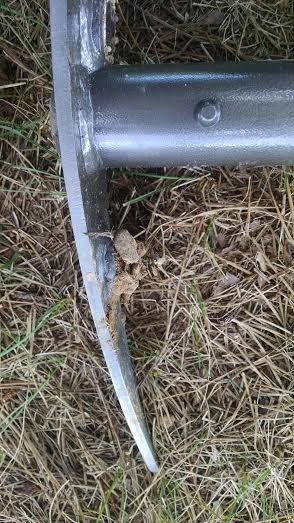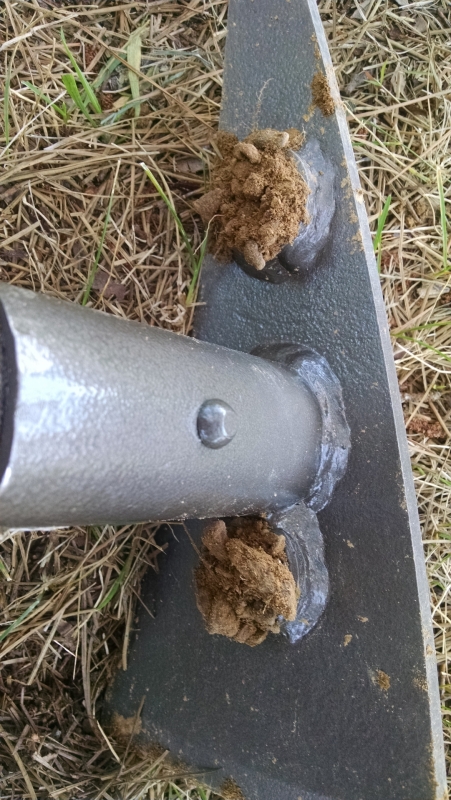Search the Community
Showing results for tags 'detector tech'.
-
On his forum at http://www.dankowskidetectors.com/discussions/read.php?2,121626 This gives a very rare, in fact as far as I know, never before seen inside look at the prototyping process and field test reporting. Thomas Dankowski is a true "engineer nerd" (I say that as a compliment) and so goes to extreme lengths and detail beyond what would normally be seen. His extremely lengthy and copious notes also provide many insights about what to possibly expect from the new Nokta Impact. Keep in mind things changed from the early reports to the final product so things Tom talks about early on change at later dates. Quoting from his thread out of context could cause a lot of misperceptions to arise. The thread well illustrates something I have observed for some time. When it comes to max depth, standard single frequency induction balance detecting technology is tapped out. Look at the struggle to obtain not another inch but even just another 0.1 inch of depth. The main advantages have come as of late in recovery speed and the ability to separate closely spaced targets. Max depth however is at a standstill. Tom's testing just confirms what I have been seeing for years. It is near impossible to discern more than hair splitting differences for max depth between most top of the line VLF detectors these days.
-
The reality here is there are a lot of great do it all detectors that are fabulous for jewelry detecting. A lot waterproof beach detectors are for all intents and purposes jewelry detectors. Yet as many people as there are for whom jewelry is the number one thing, I do not recall any company ever selling a detector that specifically targeted that market. White's has a leg up in a way in my opinion. The DFX with BigFoot is my favorite park and field jewelry detector. The Big Foot coil is a large part of that, but the DFX 15 kHz raw "un-normalized" mode is hot on jewelry and the SignaGraph is one of the best jewelry hunting digital displays ever designed in my opinion. I think there is a market for a premium price machine sporting a BigFoot type coil, running in a native 15 kHz type range. This does cause coin responses to lump up on the high end but spreads out responses on various aluminum items, allowing certain pull tabs etc to be better identified, and if need be, ignored. There has to be an ability to notch items, especially on the high end. One thing I do not like is machines with discrimination schemes that assume you are looking for coins and do not allow the high end to be blocked out. If I am cherry picking for gold jewelry, it is the high end coin range I am likely to block out, not anything in the low end. A stripped down DFX would be the ticket, or, if White's does not want any new metal box designs, something similar in the MX Sport package. Tesoro could easily come out with a machine that used a Cleansweep coil mated to a properly designed Golden uMax if they went for a tone based unit. Or, a machine with dual disc controls. One knob starts at the bottom and eliminates items as you turn it up, just like a normal disc knob. But I want a second knob that starts at the top end, and eliminates items into the coin range as you turn it down. These two knobs could either be straight forward reject item controls, or better yet, set the break point for three tones. Turning the one knob up sets the low to med tone break, and the other knob the med to high tone break. I tried to get Makro to make a BigFoot coil, but nothing has come of it so far. Mated to a Racer 2 you would have a great unit. An X-Terra 705 in native 18.75 kHz mode with a BigFoot/Cleansweep would do the trick. A Fisher F44 with a Cleansweep coil - water resistant! The key to all this is name the machine so that people know it is a jewelry detector, and sell it as a jewelry detector. The Jewelry Finder Extreme (JFX)! Given that nobody makes a BigFoot right now Tesoro could do this with more or less off the shelf parts if they desired, and it would help freshen up their lineup.
-
Like a lot of people I like keeping up on the latest and greatest. I am always on the lookout for something new in detecting. However, now that we have several forums I have been thinking about what constitutes a prospecting detector these days as opposed to machines made for coin or relic detecting. It is obvious that any detector specifically marketed as a prospecting detector is of interest on this forum. Ones where the advertising clearly is all about gold prospecting. The problem is mostly with VLF detectors and the fact that nearly any decent VLF detector made these days can double as a prospecting metal detector. Machines designed to run in the "teens" from 13 kHz to 19 kHz are overrunning the market. Most are marketed as general purpose machines. Sure, you can also use them for prospecting, but there is nothing in particular about them that makes them of special interest to prospectors. Two recent example on the forum; the Nokta Impact and the Rutus Alter 71. These are two new entries that run up to 20 kHz and 18.4 kHz respectively, and which can be used for prospecting along with the other uses the machines were designed for. However, neither of these detectors is being marketed specifically to prospectors but are aimed mostly at coin and relic hunters. I don't care too much where threads start out. This forum software is really great and just keeps getting better. I can move threads around easily, and I can leave a thirty day temporary link pointing to the new location. An example right now is my moving the Nokta Impact thread from the Detector Prospector Forum to the Metal Detecting For Coins & Relic Forum. In general from now on most new threads on VLF detectors will get started in the Coin & Relic Forum, or, after they start here, get moved when interest wanes on the DP Forum. Exceptions will be VLF type detectors that really are marketed specifically for prospecting, or which have exceptional capability in that regard. I do not consider machines running at 20 khz or lower to be rare any more. However, any VLF detector that offers 30 kHz or higher is exceptional still and so will get my interest as a possible nugget detector. No big deal and nothing anyone need worry about. I will keep stuff sorted out but just wanted people to know what the rationale is behind some of the moves.
-
Well, it is that time of year that I always get the itch to by a new detector. I am primarily a beach hunter here in So. Cal., so I have owned most of the latest and greatest detectors that are suitable for wet sand. The CTX 3030, E-trac, CZ 21, Dual Field, ATX, TDI SL just to name a few. Here are my thoughts....regardless of brand, there is little discernible difference between high end multi frequency machines. The same goes for pulse machines, no real performance difference say between a TDI SL and a Dual field. With that said, I am going to hold off buying any new detectors for a awhile. It is my opinion only that current pulse and VLF technology has reach its limits. Again, I am referencing technology for beach hunting and maybe even coin shooting. I will be in the new detector market only when new technology offers one of two things: 1. When a multi-frequency (discriminating) machine can cut through black sand like a pulse (or) 2. When and if a true discriminating pulse detector becomes available. What are your thoughts?
-
I keep reading and hearing that a person will find MORE nuggets with a good VLF unit than a PI unit and my questions is WHY? If a person has a good PI machine that they know how to run that will find nuggets as small as a few tenths of a gram, in highly mineralized soil among Hot rocks where a VLF won't work or will at least Struggle to work, as well as in milder soil, then How can a VLF find more gold for them? I am completely New to Nugget hunting with a detector so take that in to account when answering please. But it would seem to me that the PI units would be the way to go if a person just had One machine to use? What am i Not understanding? Any info appreciated. Thanks
-
I was looking at some old metal detector catalogs and got a chuckle out of these charts from the 1973 Garrett catalog. People get up in arms about advertising claims these days but get a look at these. To their credit they say "large metal objects" and do not define what that is (dump truck?) but we are talking 1973 BFO detectors here. I need to ditch my new detectors and get one of those old machines! Unfortunately depths were measured in inches then, not feet, on normal targets. The irony is the page is addressing "misleading advertising". Garrett approximate coil depths on large metal objects
-
What kind of HMI (human/machine interface) do you like in a metal detector? Asking for... a friend. CONTROLS- Knobs or buttons? One control per function or menu-based? If menu-based what kind of controls do you like to have at your fingertips? Examples of machines that, in your mind, "got it right" when it comes to controls AUDIO- Do you prefer beep and dig, or do you prefer machines that have "language" (i.e. multiple tones)? Any thoughts on Stereo Mixed Mode (like V3i - all metal in one ear, toneID in the other)? Iron ID - prefer a threshold NULL or a GRUNT? DISPLAY- What kind of info is essential for you to see? (personally I don't like screens, prefer to look at my surroundings) Thanks to any who share their thoughts on this. I know it depends on what kind of machine, but for the sake of this thread let's say it's some flavor of VLF that is geared towards prospecting.
-
Over on the Geotec Forum, somebody (probably not a native speaker of English) posted a long rant on how all the folks over there were wasting their time trying to experiment with pulse induction detectors, that the future was with induction balance machines (or complex machines with IB coils such as the GPZ). Eric Foster (who is generally acknowledged as being the pioneer of bringing the PI concept out of the physics lab and into field use) tossed the BS flag. See below. Here is Erics input. After 50 years in PI there is no way I am goes to stop. PI is everywhere, airport security, underwater wreck hunting, gas and oil pipeline detection, tramp metal detection in mines and quarries, the best military and humanitarian mine detectors are PI. From what I see on this forum, there is a lot of very valuable and novel development work in PI being done by enthusiasts, outside of the largely secretive manufacturing establishments. Long may it continue.There is plenty of room on this forum for all technologies, so there is no basis to feel threatened. Maybe Funfinder just had a bad dream in which he was encircled by PI detectorists displaying all their finds. Even the Grim Reaper has swapped his scythe for a PI detector Eric. Having said that - are conventional PI detectors for nugget hunting in the same position as the Super Constellation or DC-7 - perfect piston driven airliners but a concept not capable of further development? ML's newest detector is a complex sort of hybrid and it uses IB searchcoils. Here is the link - the discussion runs to two pages now and is pretty interesting - including Carl Moreland (Carl NC) chiming in for more work on BFO's! http://www.geotech1.com/forums/showthread.php?23511-Stop-building-PI-detectors!
-
https://blog.csiro.au/finding-gold-rush/ Not for us folks but maybe of interest.
-
Tieing into what daniel TN is saying for the only drawbacks...that is why i made those two wishes(see below). I could use my Wish 1 V series(multifrequency) unit for most everything but really tough ground where i would want my wish 2 gold/relic unit. It's all about customer demand and numbers for these small manufacturers in the metal detecting space. I think often we the metal detector customers dont call the owners and let them know what is going on. Other causes call the owners, collect numbers online that show support, and gather money support online which always directs and causes change. Personally like many of you folks i get tired of waiting for the best machines to come out. Especially gold machines which can pay for themselves. I also get these companies are small and don't have infinite resources. But i think in the new online modern age WE can change that model. Like many folks today we can put up money for a kickstarter or indiegogo effort if white's would agree to such a crowd sourced development effort. Just like all other kickstarter/indiegogo cases those that invest larger amounts equal to the unit price get a free unit and more. For instance a 1000 investor/customers for each would be worth like... Wish 1 unit cost~2k-- available funding=2 million dollars Wish 2 unit cost-4k- available funding=4 million dollars I dont know if this the amount they need, less, or more to develop these units, it would depend on what White's said. But if minelab took 10 million for development of GPZ as folks are claiming online. i think 6 million dollars could get the job done quickly for whites on these two "wish" machines or something similar! And they would get out the top 2 machines price/function wise on the high end for all metal detectorists. Steve--maybe this is something you talk to White's on and co-lead with White's the online/partners effort for? Reminder of wishes... Wish 1---ultra-ultra rugged/water proof design(leupold like casing) for the V series. Shouldnt be too hard since leupold makes their stuff in newberg, oregon at 3D plastics not too far from whites electronics HQ. Want it to be chest mountable. Would love it if they could do what depar and xp are doing and add that fourth frequency for gold hunting! Then all of my gmt and mxsport coils could work on that unit. Wish 2--same type of cased design as wish 1. But i want a super high power--nautilus level voltage(44Volts) + TDI level current--multi channel pulse gold/relic detector. I want more power to punch deeper into rough ground! I would also like some type of auto ground tuning to check strength, phase and other properties. While asking for my holy grail i want it to optimize the channels/pulses/machine to reduce the effect of the ground and environment around the machine based on profiles i setup on the fly or ahead of time. Also how about some ultra light weight accessory coils to compete with mindlab's new GPZ coils! Miner john, Coiltech or Detech could build these for white's if they think they are too low volume to make themselves.
-
Is such a thing possible? I think we still have a ways to go to get the optimum gold nugget detector. Why is it that 2 or even 3 detectors might be needed if you want to succeed? Well, you need discrimination on a lot of sites due to ferrous trash - as of today, that means you need a VLF. Unless you have a GPZ, you probably need both a GPX and an SDC to cover the spectrum of tiny shallow to deep large nuggets. VLF's can discriminate but mineralization kills their depth in many areas. GPX machines can do most of it, but don't discriminate (much) and force the operator to choose between several very different set-ups (Each with its own set of trade-offs) depending on conditions of ground and likely targets. SDC kills on small gold and is easy to use but can't discriminate and is depth limited. Even the GPZ, for all it's depth and versitility is not easy to master and costs many ounces of gold. Can a new technical approach give us a detector which deals with all these issues at once? What would this miracle detector have to do? Ease of use - It would have to be "turn on and go". Mineralization - it would have to deal,with the most highly mineralized ground - without use of adjustment and without danger of "tuning out" small targets. Sensitivity - It would have to have sensitivity to small gold at least equal to the best current VLF detectors. Depth - it doesn't have to equal the GPZ or even GPX in raw depth, but it would have to deliver more depth than the SDC - and equal the depth of the best VLF's - and do so in any ground. Will those of us who are over 60 ever see such a "Wunderwaffe"? ---- I have my hopes. What would you pay for such a machine?
-
Just curious as to whether a gold detector can detect through several inches of bedrock?
-
Has anyone here ever made their own gold detector from scratch or a kit? Any recommendations?
-
From the Codan news release at http://www.codan.com.au/Portals/0/investorpubs/22 AXS Announcement - Minelab awarded $6.7m contract.pdf (copy below): "Cooperating with NIITEK Inc., the HDD will combine Minelab’s new Multiple Frequency Continuous Wave metal detection technology and NIITEK’s advanced ground penetrating radar." 31 August 2016 MINELAB AWARDED CONTRACT TO DEVELOP NEW HANDHELD DEVICE DETECTOR FOR THE AUSTRALIAN DEFENCE FORCE Minelab Electronics, a wholly owned subsidiary of Codan Limited, has been awarded a $6.7m contract by the Department of Defence to develop a new Handheld Device Detector (HDD). The funding received under this contract is to further develop a dual sensor metal detector which incorporates ground penetrating radar. It will partially offset the development costs of the product, and the project is expected to be completed by 2018. The development of the HDD builds on Minelab's success in technology development and product innovation for use in military programmes. Codan is particularly pleased to be of service to the ADF and to provide an enhanced capability that currently does not exist. Once the HDD enters into service with the ADF, we are confident that other militaries will seek the same level of capability, broadening our market for countermine products. The contract supports Codan's stated strategy of growing its profitability by improving and broadening our product offerings while ensuring our value propositions remain relevant and leading-edge. Previous to this award, in March 2014, Minelab was selected by the Department of Defence's Rapid Prototype Development and Evaluation (RPDE) programme to receive $1.0m in funding to further integrate metal detection and ground penetration radar technologies into a lightweight and compact mechanical platform. In December 2014, RPDE provided an additional $1.3m in funding, and Minelab subsequently produced an advanced prototype of the HDD. Cooperating with NIITEK Inc., the HDD will combine Minelab's new Multiple Frequency Continuous Wave metal detection technology and NIITEK's advanced ground penetrating radar. The HDD was designed taking into account the comprehensive requirements of the ADF, supplemented with feedback from Army User Groups. It will include advanced detection technologies as well as new standards of compactness and ergonomics. On behalf of the Board Michael Barton Company Secretary MORE INFORMATION ON THE NIITEK/MINELAB GROUNDSHARK Minelab Mineshark
-
Just thought I'd start a new topic to get some discussion going. There seems to be more detectors on the market then ever. Yes a lot are variations on the same thing, but there are a few unique models such as GPZ7000, SDC2300, Gold Racer, Deus, etc. So what detector in your mind doesn't exist? Could a certain manufacturer mangle together a few of their features/patents and build something unique? Just curious
-
The GPZ clearly represents something truly new in terms of gold detectors. It has already had a very strong effect on the pricing of Minelabs GPX series. What do you suppose would be the likely effect of some new technology detector which could discriminate as well as a current VLF machines and handle ground mineralization, hot rocks, etc. as well as the best of the PI machines and the GPZ? - Oh yes, and if it sold for a "street price" of $1500? would my "dream machine" eliminate PI's and the GPZ for nugget hunting - almost certianly not. Would it do stuff that none of today's detectors can do - perhaps. result - chaos. what is the likelihood of this happening? From ML - zero, for obvious reasons From some European innovator - unlikely due to lack of local demand for gold detectors. From Whites - unlikely due to current confusion and problems bringing more conventional new machines sucessfully to market. From Garrett - doubtful due to lack of any real recent technical innovation. Gosh - who is left? - Well, as Marty Robbins once wrote.... " out near the West Texas town of El Paso… " P.S. My own speculations only - as Click and Clack use to say "Unencumbered by the thought process".
-
Due to many injuries, operations, fusions etc, I went to a pain clinic to check out my options as the pills are helping less and less. They suggested a Spinal cord implant that sends electro magnetic signals to confuse the pain that is occurring. Device can be adjusted as to strength and duration of the impulses. My question to the Dr was would it interfere with a metal detector? He said he didn`t know but would try to find out from the manufacturer. If it does it is not an option for me as I love detecting and will carry on as I do now. Anyone out there who has experience with these things? Thanks, Rege
-
When I saw a video showing the Makro Gold Racer recovery speed using two nails and a gold ring, it caused me to reflect on the various internet nail tests. Nearly all employ modern round nails, when these items rarely present issues. The common VDI (visual discrimination scale) puts ferrous items at the low end of the scale, and items with progressively increasing conductivity higher on the scale. The problem is the size of items also matters. Small gold is low on the scale, and the larger the gold, the higher it reads on the scale. A silver quarter reads higher than a silver dime, etc. All manner of ferrous trash including medium and smaller nails fall where they should when using discrimination and are easily tuned out. The problem is large iron and steel items, and ferrous but non-magnetic materials like stainless steel. Steel plates, large bolts, broken large square nails, axe heads, hammer heads, broken pry bar and pick tips, etc. all tend to read as high conductive targets. Usually it is just the sheer size pushing it higher up the scale. Detectors also love things with holes, which makes for a perfect target by enabling and enhancing near perfect eddy currents, making items appear larger than they really are. Steel washers and nuts are a big problem in this regard, often reading as non-ferrous targets. Oddball shapes cause problems, particularly in flat sheet steel. Old rusted cans often separate into irregular shaped flat pieces, and roofing tin (plated steel) and other sheet steel items are my number one nemesis around old camp sites. Bottle caps present a similar issue in modern areas. These items produce complex "sparky" eddy currents with both ferrous and non-ferrous indications. Many thin flat steel items produce remarkably good gold nugget type signals in old camp areas. Two general tips. Concentric coils often handle ferrous trash better than DD coils. A DD coil is often the culprit when dealing with bottle caps where a concentric coil often makes them easy to identify. Another thing is to use full tones. Many ferrous items are producing both ferrous and non-ferrous tones. Blocking ferrous tones allows only the non-ferrous tone to be heard, giving a clear "dig me" signal. This was the real bane of single tone machines with a simple disc knob to eliminate ferrous objects. You still heard the non-ferrous portion of the signal. Multi tones allows you to hear the dual ferrous/non-ferrous reports from these troublesome items, helping eliminate most of them. Certain detectors can also show multiple target responses on screen at once, like the White's models featuring the SignaGraph (XLT, DFX, etc.) and CTX with target trace. These displays show target "smearing" that stands out differently from the clean VDI responses produced by most good items. A machine with a simple VDI numeric readout can only show you one number at a time and the only indication you might get is "dancing" numbers that refuse to lock on. Usually though the predominate response overrides and fakes you out. This is where a good high end visual display capable of putting all VDI response on screen simultaneously can really help out. the bottom line is there is not a clear line between ferrous and non-ferrous, but an overlap. Many detectors offer a variable control to deal with this - the iron bias setting. Higher settings eliminate more ferrous, but also runs more risk of missing the desired non-ferrous. Conversely, lower settings reduce the risk of missing desired targets, but you dig more trash. I have been collecting these odd iron and steel items to practice with and to help me evaluate which machines might do best in ferrous trash. The main thing I wanted to note here is contrived internet videos with common round nails often present a misleading picture. Many machines do very well on nails yet fail miserably on flat steel. Steel Trash Testing Tech explanation from Laurence Stamatescu at Minelab:
-
Hi Steve Just wondering if there is any new news on the Fisher rumors that were being talked about 6 months or so ago. I.e. multi frequency units. Pi units, etc. Anyone feel free to chime in.
-
You also get to see the new GPZ 19 coil being tested. There is explanatory text to accompany the video at http://www.minelab.com/usa/go-minelabbing/treasure-talk/in-the-ground-is-where-detecting-really-counts
-
USPTO Patent Application 20160041292 , Discrimination method of a metal detector. http://www.freshpatents.com/-dt20160211ptan20160041292.php "In particular, the present invention is a discrimination method that is insensitive to the signals from both resistive and reactive signal components from the soil. It was discovered for the purpose of the present invention that the presence of resistive signal components from the soil may be confused with resistive signal components from metallic targets, and thus identifying the time constant spectrum of the metallic target yields in unsatisfactory results in the presence of substantial resistive signal components from the soil. The discrimination method offered by the present invention is insensitive to both resistive and reactive signal components from the soil, which may also include a component due to a substantially uniform conducting half-space (such as a saline soil)." and "One advantage is that it gives more information about the target, and therefore it confers a greater discrimination capacity. For instance, two different targets may have the same one-component approximated time constant spectrum, but they have different two-component approximated time constant spectra. Therefore, using a two component approximated time constant spectrum may allow these two targets to he distinguished from each other." Date. Minelab Electronics Pty Limited patents. 02/11/16 Discrimination a metal detector 08/06/15 Signal processing technique for a metal detector 06/18/15 Metal detector 05/28/15 Metal detector 02/05/15 Method for detecting fast time constant targets using a metal detector 11/14/13 Support arrangement for an implement 10/24/13 Communication between a sensor and a processing unit of a metal detector 09/12/13 Method for displaying metal detection information 06/20/13 Transmit signal of a metal detector 06/13/13 Method for separating target signals from unwanted signals in a metal detector 03/07/13 Metal detector sensor head 06/14/12 Metal detector with at least one transmit/receive switch 09/29/11 Metal detector sensor head 11/11/10 Metal detector with improved magnetic response application 06/17/10 Rectangular-wave transmitting metal detector 06/17/10 Metal detector for salt soils 06/10/10 Constant current metal detector with driven transmit coil 12/24/09 Real-time rectangular-wave transmitting metal detector platform with user selectable transmission and reception properties 12/24/09 Multi-frequency transmitter for a metal detector
-
I really wanted to Make a detector test Garden in my yard. My first goal was to remove anything that would make a detector beep in a small area of my yard. I had just bought a Apex pick with the 3 magnets so I though that would be perfect for clearing the yard. However I dug only 2 shallow holes and found my yard is full of small iron rocks/pebbles as I pulled half a pocket full of pebbles from those 2 shallow holes. So thinking now I will have to do something different. Maybe buy some bags of dirt at the local Walmart Apex pick iron 2.html


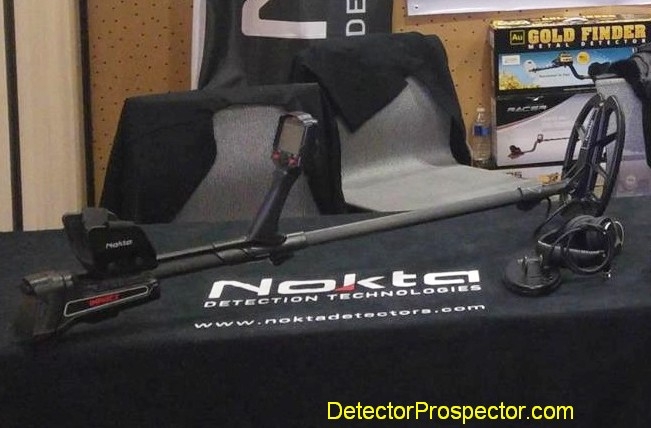
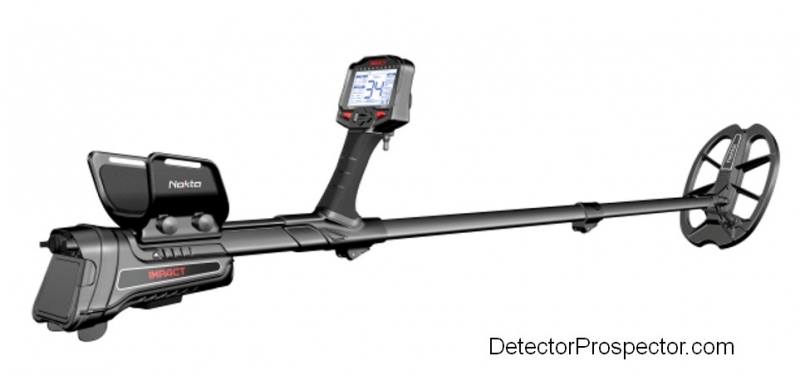
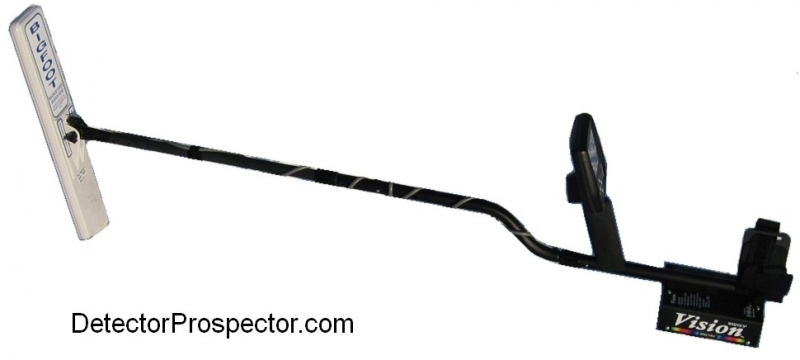
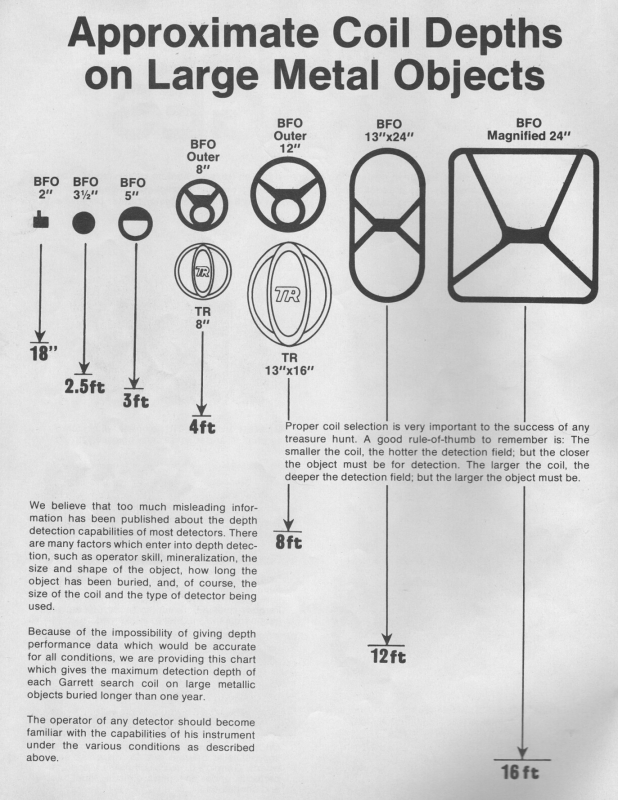
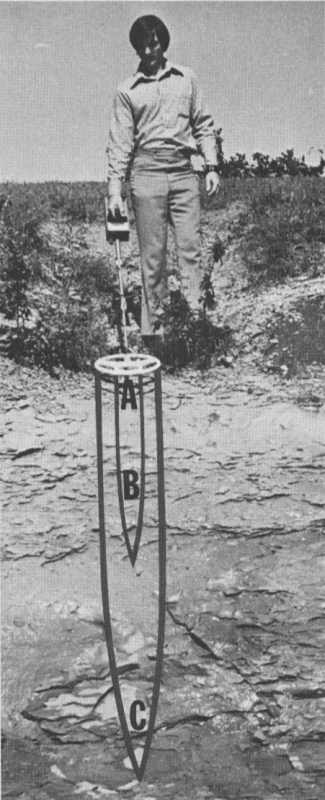

.thumb.jpg.77e4cb5bf39d44bdd2050d2edb7dfdb1.jpg)
